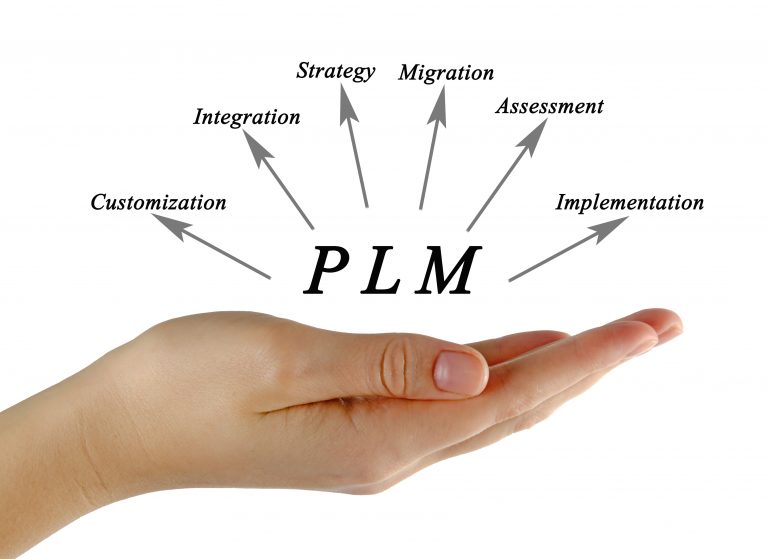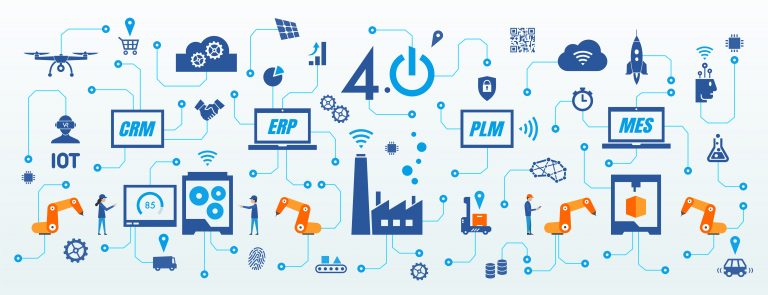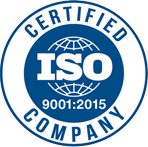Blog
Benefits of Integrating Manufacturing Execution Systems and Product Lifecycle Management Solutions

Today, more than ever manufacturers have a difficult job of advancing production efficiencies and quality while keeping track of all the different stages of product development. Especially when we look at mass customization and the various product options consumers would like to have. Luckily, when it comes to different systems that ease the job of manufacturers worldwide, there isn’t a shortage of options. Manufacturing Execution Systems (MES) and Product Lifecycle Management (PLM) software are two of the tools manufacturers rely on when it comes to streamlining their business processes and fulfilling consumers’ appetite for unique products. The integration between MES and PLM has the potential to transform and modernize your business. And considering the fact that digital transformation in the manufacturing industry is important now more than ever, this seems to be the right time to delve into the matter more deeply.
Whether you are looking to improve existing operations, achieve operational excellence or offer your consumers more product choices without increasing manufacturing costs, the good news is that you have many different options as you seek MES or PLM systems and vendors. But before you invest in these systems and try to integrate them into a powerful meaningful whole, let’s review some basic functions of both MES and PLM.
What is Manufacturing Execution Systems (MES)?

MES systems work by providing necessary pieces of information that allow manufacturers to understand and control the current status of activities on the plant floor and how these activities can be optimized in order to improve production. One of their main functions is to track, document and (in some cases) control the complete transformation of raw materials into finished products. However, that’s just the tip of the iceberg when it comes to the benefits of MES and its functionality.
MES also works across multiple functional areas, such as product quality, resource scheduling, production analysis, etc. These systems create a record of data, processes, and outcomes of the manufacturing process. This functionality is beneficial across all industries including; food and beverage, automotive, chemical, A&D, medical devices, mining, milling, pharmaceutical, etc. What’s so great about Manufacturing Execution Systems is certainly the way they can uncover production issues and constraints in real time to many business processes. As well MES enables optimizing high value technology such as Autonomous Mobile Robots (AMRs), Cobots/Robots, RFID, etc. to be quickly integrated to the manufacturing process. Integration with PLM, truly ties everything together to foster an intelligent manufacturing enterprise.
What is Product Lifecycle Management (PLM)?

Product Lifecycle Management is the process of managing the entire lifecycle of a product, from its inception (as part of New Product Introduction or NPI) until the moment it reaches the shelf. PLM works by integrating data, resources, processes, and people into one unique whole. The reason why PLM has become such a handy tool lately is due to the fact that it stores all the information in one place. The usage of those pieces of information is easy from that point forward.
One other benefit that comes with PLM is the number of qualified vendors on the market. Many companies have realized the potential of tailored PLM solutions across many industries. More importantly, they have realized the need for manufacturers to use multiple systems across different business aspects. For that reason, PLM vendors now strive to tailor reliable solutions that will integrate well with different systems. That’s why it comes as no surprise that MES and PLM work together so smoothly.
Integration between MES and PLM
Both MES and PLM have different functions. However, they operate under a fairly similar goal – making the manufacturing process easier and in compliance with customer requirements. The value these two systems offer is significantly amplified when the roles are well-defined and integration from both data and process standpoints is achieved. Now, the list of benefits that the integration between MES and PLM can bring is a rather long one, and it includes:
- Reduced number of errors
- Seamless execution of product design variations/recipes
- Faster time to market
- Enhanced product traceability
- Improved efficiency
- Increased agility
Imagine how much easier and faster the manufacturing process would be if you could only reduce the number of human errors and the rework/repair needed to correct these errors (also known as the “hidden factory”). Or if you could remove most of the manual processes and bring about complete automation. That being said, it obviously pays off to invest your time in finding reliable MES solutions, as well as tracking down trustworthy PLM vendors.
Where does MES end and PLM begin?

Naturally, you’ll start wondering where one ends and the other one begins. But we ask you – why can’t these two systems work together as a synchronized whole? The successful integration between MES and PLM will close the loop between engineering and manufacturing. It will provide a synchronized backbone that will integrate the product and production lifecycle.
The truth is that these days, manufacturers are striving to bring virtual reality closer to manufacturing plants. The digital design of the manufacturing processes can turn this vision into reality. What leading manufacturers are realizing is that the integration between MES and PLM will bring them one step closer to making progress towards making good plant floor solutions and integrating approach to design. And all of that is possible only with the simultaneous use of MES and PLM.
Leverage your resources
Both MES and PLM are undeniably sizeable investments. That being said, many manufacturers and plant facility owners will contemplate for a long time before deciding to purchase either one of them. As an additional obstacle, many business owners take into account the fact that these two systems with proper integration, might be a better choice as a long-term investment, as opposed to a quick fix to some of the problems you are facing.
However, if there’s anything these two systems have shown is that they can both help you gain better leverage on the market, as well as better utilize all of your resources. What a successful integration between MES and PLM will bring is products that will meet the requirements along with improved efficiency across virtually all of your departments. Don’t get us wrong – both MES and PLM pack a punch on their own. But together, they work in creating magic – the kind of magic that will help you streamline your business processes with incredible ease. If you have been struggling with efficiency for a while, you have found your perfect solution.
In the book “MES An Operations Management Approach”, Grant Vokey(our in house Principal MES Consultant) and Tom Suebert discuss the use of PLM and MES as part of the toolset in manufacturing operations management (or MOM), how these applications interact with each other and the best practices for integrating these tools. Also discussed, is some of the common errors that are made when implementing this integration.
For more information on the use of PLM as part of your MOM application set and for guidance on integrating these applications into a synchronized enterprise system, order your book using the link below.
To order your book, click here
About Frontech Solutions Inc.
Frontech Solutions Inc. is a company committed to providing businesses with flexible PLM solutions that utilize the best current browser-based technologies which allow companies to operate at a high level of efficiency with a reduced number of errors.
